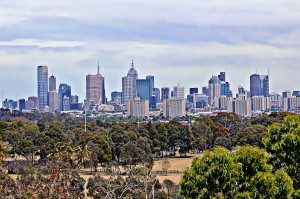Demographics drive our property markets.
How many of us there are, how much we earn, how we want to live, where we live, what we can afford.
Over the second half of last year information from the 2016 Census was progressively released and revealed how the economy is adapting to an ageing population and lifestyle changes.
The clever folk at SGS Economics and Planning analysed the data and deduced several key trends in employment growth in major capital cities.
One of their conclusions was that as more people choose to live close to high quality employment opportunities, demand for housing in inner city locations increases, placing pressure on property prices and housing affordability.
Here’s what SGC Economics had to say about employment growth and where it is occurring, as this will clearly be a major driver of our property markets moving forward:
A massive 900,000 jobs created:
Analysis of Place of Work data shows that over 900,000 new jobs were created in the major metropolitan regions of Greater Sydney, Melbourne, Brisbane, Perth and Adelaide between 2011 and 2016.
This article presents the key changes in employment between 2011 and 2016.
It should be noted that the 2011 Census data had issues allocating all jobs to a precise location, and the 2016 Census data had issues allocating all jobs to a particular industry.
These data quality issues should be keep in mind when reviewing the results.
Almost a quarter of these new jobs were in the Health care & social assistance industry (153,900), the strongest contributor to employment growth across Australia and most capital cities.
This was driven by Australia’s ageing population, particularly in the Residential care (such as nursing homes, 32,200 jobs) and Social assistancesectors (including childcare services, 36,700 jobs).
There was also a large amount of growth in Education & training employment (104,200), driven by strong population growth in younger age groups, and increased demand from overseas students attending University in Australia.
Whilst each city has its own industry profile given local economic strengths, these broader trends in health care and education are still apparent at the city level.
While the major metropolitan regions thrived, the rest of Australia saw an increase of only 5,400 jobs.
City Comparison
Employment in Sydney is booming.
Greater Sydney had the strongest employment growth of all Australian capital cities, reaching 2.2 million jobs. 
The Construction industry contributed the greatest share of employment growth, adding 20 per cent of all new jobs.
Health care & social assistance employment growth was also strong (19 per cent), in line with broader national trends.
Accommodation & food services employment growth was robust (13 per cent), driven by population growth and a growing tourism industry.
Jobs within knowledge industries also grew by a large amount in Sydney, particularly Professional and Financial services.
Table 1: Total employment (Place of Work)

Source: ABS Census of Population and Housing (2006, 2011 & 2016)
Melbourne also experienced strong growth in employment, increasing to over 2 million jobs.
A large proportion of this growth was driven by Health care & social assistance (23 per cent) and Education & training (15 per cent).
Like Sydney, the other key contributing industries to Melbourne’s jobs growth included Accommodation & food services and Professional services .
Employment growth in Brisbane, Adelaide and Perth was slower than the two largest capital cities, but still steady. 
Growth in these cities was largely driven by population serving industries including Health care & social assistance, Education & training and Accommodation & food services.
In Adelaide almost 50 per cent of employment growth was in Health care & social assistance , offsetting a large drop in Manufacturing employment.
The capital cities are growing, and increasing their share of jobs as firms choose to locate in highly productive inner city areas.
Employment growth in Sydney and Melbourne was concentrated in the inner city areas, with the city’s share of total metropolitan employment increasing to 22.
4 per cent and 20.5 per cent in Sydney and Melbourne respectively over the last 10 years.
This increasing concentration of employment is generating economic benefits but is also placing strain on the transport network.
These areas are already experiencing road and rail traffic congestion, which will only worsen if future population and employment growth is not accommodated appropriately.
Table 2: Inner City Share of Greater Capital City Employment

Source: ABS Census of Population and Housing (2006, 2011 & 2016)
Use the interactive chart below to compare employment growth across cities, and to explore the changing industry profile of major metropolitan regions and inner city areas.

Click here to see the interactive version of the chart
The Bottom Line: 
This newly released 2016 Census data reveals how the economy is adapting to an ageing population and lifestyle changes.
As more people choose to live close to high quality employment opportunities, demand for housing in inner city locations increases, placing pressure on property prices and housing affordability. Policy needs to respond to these challenges, such as through improving public transport capacity and infrastructure, or through increasing housing supply in inner areas.
Source: SGS Economics and Planning

No comments:
Post a Comment